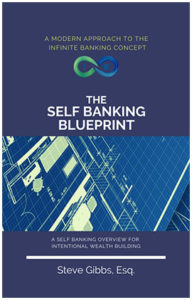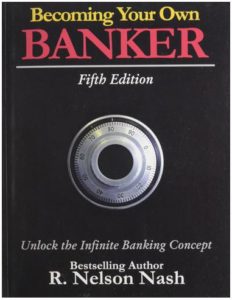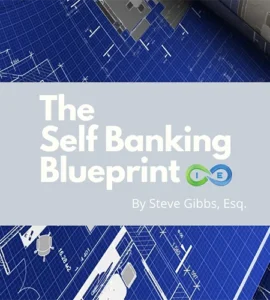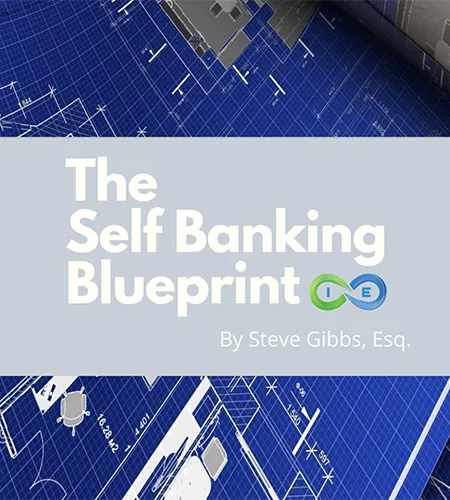About the Author
Steve Gibbs, JD, AEP® is CEO and Co-Founder of Insurance and Estate Strategies LLC. With 15+ years of estate planning experience as a licensed attorney in multiple states, Steve specializes in strategic life insurance design and wealth transfer strategies. He holds the prestigious AEP® certification for multi-disciplinary estate planning expertise and is a Penn Mutual Century Club award recipient.
TL;DR – Key Takeaways
The Bottom Line: While financial entertainers push “buy term and invest the difference,” the math tells a different story. Whole life insurance with infinite banking offers superior wealth-building potential compared to term life’s temporary protection.
- Term Life: Cheap temporary protection, expires worthless in 99% of cases, builds zero cash value
- Whole Life: Permanent coverage, guaranteed cash value growth, tax-free loans, dividend potential
- Winner for Wealth Building: Whole life with infinite banking strategies outperforms “buy term invest the difference” for most families
- Market Reality: Whole life holds 36% market share ($5.8 billion) vs term’s 19% ($3.0 billion) in 2024
Term vs Whole Life Insurance: Complete 2025 Comparison Guide
In the epic clash of term life vs whole life insurance, most financial entertainers—led by Dave Ramsey and Suze Orman—push “buy term and invest the difference” (BTID). As advocates of infinite banking, we believe a properly designed whole life policy is a powerhouse for wealth-building and financial freedom.
This comprehensive 2025 guide examines which is better—term or whole life insurance—debunks BTID myths, and shows why whole life, paired with infinite banking, can transform your financial future.
Table of Contents
Market Trends: Term vs Whole Life in 2024–2025
Understanding the current insurance market provides valuable context for the term vs whole life debate. Despite financial entertainers promoting term life insurance, the market data reveals interesting trends about consumer preferences and industry performance.
In 2024, whole life insurance held a 36% market share of U.S. life insurance sales ($5.8 billion), while term life accounted for 19% ($3.0 billion), per LIMRA (limra.com). Term life sales rebounded in 2023, driven by digital platforms and competitive pricing, with 1–5% growth projected for 2025. Whole life faced headwinds from rising interest rates but expects modest recovery in 2025 as yields normalize (nerdwallet.com).
| Product Type | Market Share (2024) | Total New Premium | Growth Trend |
|---|---|---|---|
| Whole Life | 36% | $5.8 billion | Modest recovery |
| Term Life | 19% | $3.0 billion | 1–5% YoY |
Market Insight: Term life’s affordability drives steady growth, but whole life’s 36% share reflects its enduring appeal for long-term security and cash value growth.
Key Trends Shaping the Term vs Whole Life Debate
- Digital Platforms: Insurers like Guardian Life and MassMutual are enhancing online quote tools, especially for term life’s simplicity.
- Convertible Policies: Convertible term policies allow shifts to whole life without medical exams, gaining popularity.
- Living Benefits: Whole life policies from Northwestern Mutual and Penn Mutual now include riders for chronic or terminal illness.
- Consumer Misconceptions: 27% of Americans worry about affordability, with Gen Z and Millennials overestimating term costs by up to 488%.
Key Takeaway: Despite BTID marketing, whole life insurance maintains nearly twice the market share of term life, suggesting consumers recognize value beyond temporary protection.
Comparing Term Life vs Whole Life Insurance
Before examining why whole life insurance excels for wealth building, let’s establish a comprehensive comparison of term life vs whole life insurance. Understanding both similarities and differences helps clarify which type of life insurance best serves your financial goals.
Similarities Between Term and Whole Life Insurance
Both term life and whole life insurance share fundamental characteristics that make them valuable financial protection tools:
- Death Benefit: Both pay a tax-free lump sum to beneficiaries upon the insured’s death.
- Living Benefits: Both offer riders like chronic illness or long-term care, allowing access to funds for serious health conditions.
- Fixed Premiums: Both can have fixed premiums, though some term policies increase every 5 years (choose level-premium term for stability).
Key Differences: Term vs Whole Life Insurance
The critical differences between term and whole life insurance determine which better serves your wealth-building and protection goals:
- Duration: Whole life lasts your entire life (up to age 121), while term life insurance covers 10–30 years, expiring worthless in ~99% of cases.
- Cost: Whole life premiums are ~8x higher than term for the same death benefit, but become more affordable over time with fixed rates and cash value growth.
- Cash Value: Whole life builds cash value for loans or withdrawals; term has none, earning it the nickname “death insurance.”
- Dividends: Whole life dividends from mutual insurers like Penn Mutual (6.34% in 2018) boost cash value and death benefits; term offers no dividends.
- Death Benefit Growth: Whole life’s death benefit grows with paid-up additions; term’s stays fixed.
- Premium Flexibility: Whole life allows dividend-funded premiums, premium offsets, or reduced paid-up policies; term requires consistent payments or risks lapse.
- Utility: Whole life is a wealth-building tool via infinite banking; term is limited to temporary protection.
Complete Term vs Whole Life Comparison
| Feature | Whole Life | Term Life |
|---|---|---|
| Death Benefit | Pays a Death Benefit Upon the Death of the Insured | Pays a Death Benefit Upon the Death of the Insured |
| Living Benefits | Living Benefits | Living Benefits |
| Premiums | Fixed Premiums that can be Flexible Depending on Policy Design | Fixed Premiums Until Term Expires |
| Coverage Duration | Coverage is Permanent, Lasting your Entire Life | Coverage is for a Set Period of Time |
| Cash Value | Guaranteed Cash Value Growth | Has No Cash Value |
| Dividends | Annual Dividend Payment | No Annual Dividend |
| Tax Treatment | Cash Value Grows Tax Deferred | Has No Cash Value |
| Death Benefit Growth | Increasing Death Benefit | Death Benefit is Level |
| Premium Flexibility | Premiums can be offset or Adjusted Based on Policy Design | Don’t Pay, Don’t Play. Policy will Lapse if Premiums are Not Paid |
| Blending Options | Can Be Blended with Term Life | Can be Converted to Permanent Insurance |
| Primary Use | Provides Utility | Basic Insurance |
Key Takeaway: While both provide death benefits, whole life insurance offers permanent coverage with cash value growth and dividend potential, making it superior for long-term wealth building compared to term life’s temporary protection.
When Term Life Insurance Makes Sense
While we advocate for whole life insurance as a superior wealth-building strategy, there are specific situations where term life insurance can be the appropriate choice. Understanding these scenarios helps you make an informed decision about term vs whole life insurance for your unique circumstances.
Temporary Income Replacement Needs
Term life insurance works best when you have temporary financial obligations that will disappear over time:
- Young Families: Parents with young children who need income replacement until kids become financially independent
- Mortgage Protection: Covering a home loan that will be paid off within the term period
- Business Loans: Protecting against business debt that has a defined payoff timeline
- Educational Funding: Ensuring college costs are covered if the breadwinner dies before children graduate
Budget Constraints
Term life insurance may be appropriate when:
- Limited Budget: You can only afford term premiums and some protection is better than none
- Temporary Coverage: You need immediate coverage while planning to purchase whole life insurance later
- Young Professionals: Recent graduates with student loans but limited income who plan to upgrade later
Convertible Term as a Bridge Strategy
Convertible term policies can serve as stepping stones to whole life insurance:
- Health Concerns: Lock in coverage while healthy, then convert to whole life without medical exams
- Income Growth: Start with term while building income, then convert to whole life for wealth building
- Career Uncertainty: Maintain flexibility during career transitions
Important Note: Even when term makes sense initially, the goal should be transitioning to whole life insurance for long-term wealth building and permanent protection. Term should be viewed as temporary, not a permanent solution.
Key Takeaway: Term life insurance works for temporary needs and budget constraints, but whole life insurance provides superior long-term value through cash accumulation, dividends, and infinite banking opportunities.
Common Objections to Whole Life Insurance (and Why They’re Wrong)
Financial entertainers and BTID advocates consistently attack whole life insurance with the same tired objections. Let’s examine these criticisms and reveal why they don’t hold up to scrutiny.
Objection 1: “Whole Life Has Slow Cash Value Growth”
The Claim: Financial entertainers argue that whole life takes 7–10 years to build meaningful cash value.
The Reality: High early cash value policies can surpass premiums paid by year 4. More importantly, you can borrow against cash value within months of policy inception, using these funds for investments or debt payoff. This liquidity advantage beats letting money sit stagnant in traditional retirement accounts that penalize early access.
Additionally, the slow growth argument ignores the compound interest effect and dividend reinvestment that accelerates cash value accumulation over time.
Objection 2: “Whole Life Provides Low Returns”
The Claim: Critics like Dave Ramsey claim whole life returns average only 1.2% annually.
The Reality: Whole life insurance isn’t designed as a traditional investment but as a compound interest vehicle with guaranteed growth plus dividends. Long-term returns often exceed 5% (Penn Mutual paid 6% dividends in 2025).
More importantly, what’s term life’s return? Negative 100% since 99% of policies expire worthless with zero cash value and massive opportunity cost from premium payments that build no equity.
| Policy Type | Long-term Return | Cash Value | Risk Level |
|---|---|---|---|
| Whole Life | 4-6%+ with dividends | Guaranteed growth | Low |
| Term Life | -100% (expires worthless) | Zero | High (total loss) |
Objection 3: “The Insurance Company Keeps Your Cash Value When You Die”
The Claim: Critics argue that insurers keep your cash value upon death, paying only the death benefit.
The Reality: This argument is like complaining that a home buyer “keeps your equity” when you sell your house. Your beneficiaries receive the full death benefit, while you enjoyed access to cash value during your lifetime through loans or withdrawals.
This criticism also ignores that properly designed policies use paid-up additions to increase both cash value and death benefit simultaneously. See our detailed debunking of Dave Ramsey’s myths for more comprehensive analysis.
Objection 4: “You’re Better Off Self-Insuring”
The Claim: BTID advocates suggest investing the premium difference to eventually “self-insure.”
The Reality: Self-insuring increases risk rather than reducing it. It’s like suggesting you drive without auto insurance or own a home without homeowner’s coverage. Whole life’s leveraged death benefit actually reduces risk by providing immediate estate liquidity.
Consider this: would you cancel your auto insurance once your car was paid off? The same logic applies to life insurance—the need for protection and wealth transfer often increases with age, not decreases.
Objection 5: “Agents Push Whole Life for High Commissions”
The Claim: Critics suggest agents recommend whole life primarily for commission income.
The Reality: High cash value whole life policies actually pay modest commissions (typically 25% of first-year premiums, approximately $2,500 on a $10,000 annual policy). Meanwhile, financial planners charging 1% annually on assets under management earn $300,000 over 30 years on a $1 million portfolio—far exceeding any agent’s one-time commission.
The commission argument also ignores that properly designed policies maximize client benefits through early cash value accumulation, not agent compensation.
Expert Insight: These objections typically come from financial entertainers who profit from directing your money toward Wall Street investments. Whole life insurance with infinite banking keeps your wealth under your control, not theirs.
The Real Question: Why Do Financial Entertainers Attack Whole Life?
The consistent attacks on whole life insurance reveal more about the attackers’ business models than the product itself. Financial entertainers profit by directing your money toward mutual funds, stock portfolios, and retirement accounts they can manage for ongoing fees.
Whole life insurance with infinite banking threatens this model by:
- Eliminating Management Fees: No ongoing advisory fees or portfolio management costs
- Reducing Market Dependency: Guaranteed growth regardless of market performance
- Providing Direct Access: You control your money without advisor approval
- Creating Generational Wealth: Tax-free death benefits bypass traditional wealth transfer restrictions
Follow the Money: Financial entertainers who attack whole life insurance often have financial incentives to keep your money in products they can manage for ongoing fees. Whole life with infinite banking eliminates their revenue stream by putting you in control.
Ready to Learn More? Discover how whole life with infinite banking outperforms traditional financial planning approaches. Schedule a free consultation to explore your wealth-building potential—no obligation.
Key Takeaway: Common objections to whole life insurance often ignore the product’s true purpose and benefits while promoting alternatives that profit the critics. Understanding the real math reveals whole life’s superior wealth-building potential.
Why Whole Life Insurance Excels: The Infinite Banking Advantage
Whole life insurance transforms from simple protection into a sophisticated wealth-building tool when combined with infinite banking strategies. This approach addresses fundamental flaws in traditional financial planning while providing benefits that term life insurance simply cannot match.
The Forced Savings Solution
With Americans’ median savings hovering around $5,200, the BTID strategy has demonstrably failed for most families. Whole life insurance creates a disciplined savings environment that delivers consistent 5%+ returns through guaranteed growth plus dividends—far exceeding what most people achieve through traditional savings or retirement accounts.
Unlike 401k plans that restrict access and tax withdrawals as ordinary income, whole life provides liquidity without penalties while maintaining tax-advantaged growth.
Velocity of Money: The Compound Advantage
Whole life insurance enables the velocity of money principle through a unique characteristic: dividends continue paying on your entire cash value even when you have loans outstanding. This compound interest growth creates powerful wealth multiplication opportunities:
- Real Estate Investment: Use policy loans for real estate investments, generating rental income while cash value continues growing
- Stock Market Opportunities: Access capital during market downturns, repay loans with investment proceeds
- Business Funding: Finance business opportunities or expansion without traditional lending requirements
- Debt Elimination: Pay off high-interest debt using low-cost policy loans
This velocity advantage allows the same dollar to work in multiple places simultaneously—impossible with term life insurance or traditional investments.
Tax-Free Retirement Income Strategy
A properly structured Life Insurance Retirement Plan (LIRP) using whole life provides tax-free income during retirement through policy loans. As the policy matures and dividends compound, these loans can become self-liquidating—meaning dividend payments eventually cover loan interest without reducing cash value.
| Retirement Strategy | Tax Treatment | Access Restrictions | Legacy Benefits |
|---|---|---|---|
| 401k/IRA Withdrawal | Ordinary income tax | Required distributions at 73 | Taxable inheritance |
| Whole Life Loans | Tax-free | None—your choice | Tax-free death benefit |
Risk Mitigation Through Non-Correlation
Whole life insurance functions as a non-correlated asset that provides guaranteed returns regardless of market conditions. This stability offers multiple advantages:
- Market Crash Protection: Your cash value continues growing when stock markets decline
- Opportunity Capitalization: Access cash quickly to invest during market dislocations
- Emotional Stability: Guaranteed growth reduces financial stress and improves decision-making
- Portfolio Balance: Complements market-based investments without correlation risk
Maximum Financial Control
Unlike restrictive retirement account rules, whole life insurance provides complete control over your money:
- Access Timing: Borrow against cash value anytime without penalties
- Repayment Terms: Set your own loan repayment schedule
- Usage Freedom: No restrictions on how you use policy loans
- Legacy Planning: Direct how death benefits pass to beneficiaries
Infinite Banking Edge: Whole life insurance transforms into your personal banking system, offering guaranteed growth, complete liquidity, tax advantages, and generational wealth transfer—capabilities that term life insurance and traditional investments cannot match.
Conclusion: Choosing Between Term vs Whole Life Insurance
“When a well-packaged web of lies has been sold gradually to the masses over generations, the truth will seem utterly preposterous and its speaker a raving lunatic.” ~ Dresden James
The term vs whole life insurance debate reveals fundamental differences in financial philosophy. The BTID mantra, promoted by financial entertainers, directs your money toward Wall Street products they can manage for ongoing fees. Whole life insurance with infinite banking offers a paradigm shift that keeps wealth under your control.
The Evidence Speaks Clearly
Market data supports whole life’s superiority for long-term wealth building:
- Market Share: Whole life captures 36% vs term’s 19% despite price differences
- Consumer Behavior: Sophisticated buyers choose permanent coverage for wealth building
- Historical Performance: Mutual insurers like Penn Mutual have paid dividends for over 170 years
- Wealth Creation: Infinite banking strategies create generational wealth, not just temporary protection
When Each Strategy Makes Sense
Choose Term Life Insurance When:
- You have temporary income replacement needs
- Budget constraints require starting with lower premiums
- You’re using convertible term as a bridge to whole life
Choose Whole Life Insurance When:
- You want permanent protection with wealth-building benefits
- You seek tax-advantaged growth and income strategies
- You want to implement infinite banking for financial control
- You’re planning for generational wealth transfer
Professional Recommendation: For most families with long-term financial goals, whole life insurance provides superior benefits through guaranteed growth, tax advantages, liquidity, and legacy creation. Term life insurance should serve as temporary protection during financial transitions, not a permanent strategy.
Unlock Wealth with Whole Life and Infinite Banking
Ready to move beyond the BTID myth and embrace whole life’s wealth-building power? Our advisors will show you how infinite banking transforms your policy into a personal financial system.
- ✓ Discover whole life’s wealth-building potential vs. term’s limitations
- ✓ Learn infinite banking strategies for real estate, investments, or retirement
- ✓ Explore tax-free loans, dividends, and risk mitigation
- ✓ Get a personalized plan from top insurers like MassMutual or Penn Mutual
Schedule your complimentary 30-minute consultation today to redefine your financial strategy.
No obligation. No pressure. Just expert insights to unlock whole life’s potential.
Final Thoughts: Your Financial Future Depends on Your Choice
The choice between term vs whole life insurance represents more than an insurance decision—it’s a choice between temporary protection and permanent wealth building, between following conventional wisdom and taking control of your financial destiny.
At Insurance and Estate Strategies, we challenge the status quo because we’ve seen the superior results that properly designed whole life insurance delivers. Join us for a free consultation with our Pro Client Guides to discover how whole life insurance can redefine your financial future.
Final Takeaway: Term vs whole life isn’t just about insurance—it’s about choosing between temporary protection and permanent wealth building. Whole life with infinite banking provides the financial control and growth potential that term life insurance cannot match.





